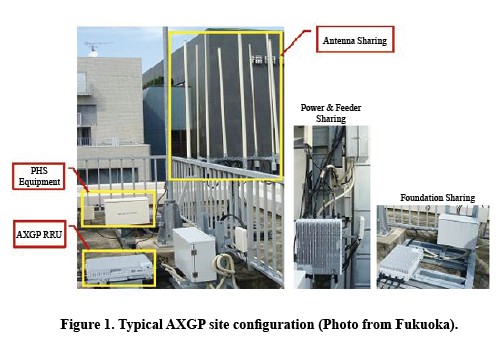SoftBank Group’s WCP Builds the World’s Largest AXGP Network
“We have chosen ZTE, the world’s leading telecommunications equipment provider, as our partner to build the world’s largest TDD network. We hope that ZTE can maintain its leading innovation capability in mobile communications technologies to help us build the best next generation mobile data network in Japan and even the world,” said Mr. Yoshioki Chika, WCP CTO, SoftBank Group
Intense Competition in the 4G era
The Japanese telecommunication market is characterized by high population density, high mobile penetration, high ARPU, and high quality. The mobile penetration rate is estimated to be more than 97%, and ARPU is $54 per month (more than 60% from data) in 2012. Wireless data is the main contributor to ARPU because there are abundant data services that depend on broadband.
Now, competition in mobile telecommunications is fierce. NTT DoCoMo launched its LTE network in December 2010. KDDI launched its commercial LTE service on 21 Sep, 2012, and plan to have 98% population coverage by Mar, 2013. SoftBank is one of the leading Japanese mobile operators and has a nationwide W-CDMA network, and is the only operator to have the 4G AXGP and FD-LTE technologies simultaneously. Its market share is 23.79%, and it aims to be the No. 1 mobile and fixed broadband internet company in Asia. SoftBank must therefore adopt more advanced 4G technologies to face these challengers.
AXGP: A Better Alternative Choice for SoftBank
As AXGP (Advanced eXtended Global Platform, fully compatible with TD-LTE) matures, SoftBank has applied it to their next-generation mobile broadband services. This began in 2010 when SoftBank acquired Willcom, which owned a 30 MHz TDD spectrum license and more than 160,000 PHS sites across Japan. A new company called Wireless City Planning (WCP) was founded specifically for the AXGP project.
WCP selected ZTE as its strategic partner for the AXGP project. The communication and cooperation with WCP was good, and ZTE built an excellent AXGP network for WCP in several cities. ZTE’s reliable products, strong R&D capability, and fast delivery were greatly appreciated by WCP and laid a solid foundation for future projects.

Co-Siting PHS for Lower Cost and Faster Deployment
WCP owns 160,000 PHS (2G TDD) sites. AXGP eNodeB shares site resources with PHS base stations. An AXGP eNodeB and PHS base station can share the antenna, optical transmission, power supply, and other resources. The antenna is a dual-band Omni Spear antenna at 1.9 GHz for PHS and 2.5 GHz for AXGP.
Co-siting reduces network investment and the time needed for deployment because there is no need to acquire new sites with high rents.
Centralized Baseband for Convenient Management and Space Saving in an Equipment Room
ZTE provided large-capacity baseband units (BBUs) for centralized baseband. Every general control room includes several BBU cabinets. A BBU cabinet houses multiple BBUs, and each BBU supports 18 cells. A remote fiber method is used for GPS because a room cannot be drilled for feeder cable.
Distinctive Services in Japan
The Japanese telecom market is well known for its unique services. The development of AXGP and other wireless broadband technologies enables operators to provide better experiences for subscribers.
In Japan, operators invest in their own platforms. The increasing popularity of smart devices has caused an information explosion. Customers tend to seek opinions and advice on web pages or on social media before making purchasing decisions. In an effort to support such services in this market, operators have established online to offline (O2O) platforms for shopping anytime and anywhere. They have also explored the mobile payment market with high profits.
WCP commercialized its 4G AXGP network on 1st November 2011, and attracted 261,400 subscribers till August 2012 (data source: Telecommunication Carriers Association, http://www.tca.or.jp/english/database/2012/08/index.html). It’s a new era of MBB for SoftBank.
Milestones
● October 2010. WCP was founded.
● February 2011. ZTE got the PO for AXGP.
● April–August 2011. Lab and field tests on RAN were conducted.
● November 2011. AXGP network was put in service.
● February 2012. As a MVNO, SoftBank released its 4G service with WCP AXGP network.